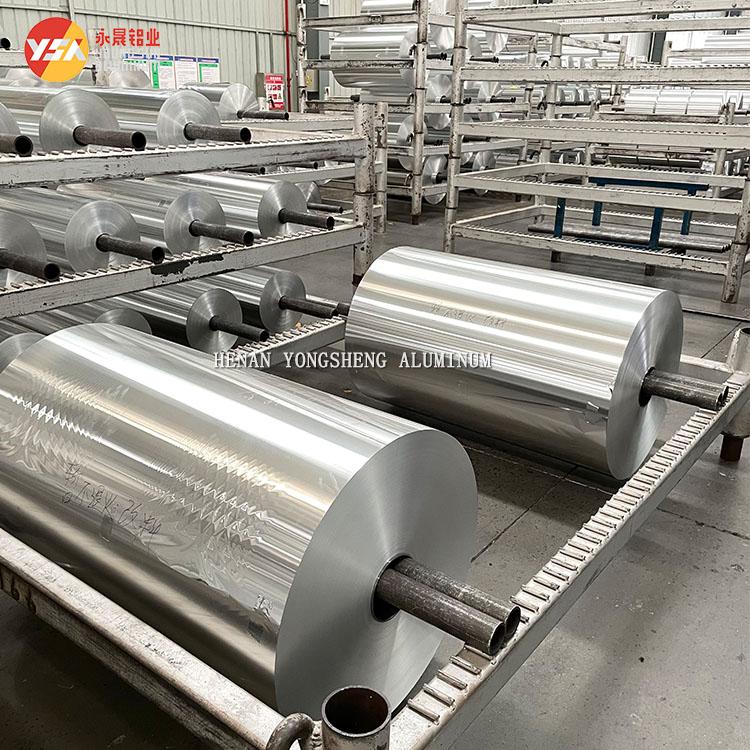Understanding the melting point of aluminum foil ensures safe applications in cooking, packaging, and industrial processes.
Aluminum foil is a household and industrial staple, prized for its flexibility, conductivity, and resistance to moisture. However, its performance under high temperatures depends on one critical property: the aluminum foil melting point. Whether you’re using foil for baking, grilling, or specialized manufacturing, knowing its thermal limits prevents accidents and ensures optimal results.
In this guide, you’ll learn:
- The exact melting point of aluminum foil
- Factors that affect its heat resistance
- Practical tips for safe high-temperature use
- FAQs about aluminum foil and heat
What is the Melting Point of Aluminum Foil?
Pure aluminum has a melting point of 660.3°C (1,220.5°F). However, most household and commercial aluminum foil is made from alloy 1145 or 1235, which contains 99.45% to 99.95% aluminum. These alloys have a melting point very close to pure aluminum, typically ranging between 630°C to 660°C (1,166°F to 1,220°F).
Why Does This Matter?
While aluminum foil can withstand high heat, exceeding its melting point causes it to warp, degrade, or even ignite in extreme cases. Understanding this threshold is crucial for:
- Safe cooking and baking
- Industrial processes like metallurgy or insulation
- Preventing fire hazards
Factors Affecting Aluminum Foil’s Heat Resistance
1. Alloy Composition
- Pure aluminum (1000 series): Highest melting point (~660°C).
- Alloyed foil (e.g., 3003): May include manganese or silicon, slightly lowering the melting point but improving strength.
2. Thickness
Thicker foil (e.g., heavy-duty 18µm) distributes heat more evenly and resists melting better than thin foil (standard 12µm).
3. Heating Method
- Direct flame contact: Gas stoves or grills can create localized hot spots exceeding 660°C.
- Oven baking: Standard ovens rarely exceed 260°C (500°F), well below aluminum’s melting point.
Common Uses of Aluminum Foil at High Temperatures
1. Cooking & Baking
- Oven roasting: Safe up to 260°C (500°F). Avoid contact with heating elements.
- Grilling: Use foil as a barrier, but keep it away from open flames.
- Sous vide: Foil-wrapped foods can be boiled (100°C) without issues.
2. Industrial Applications
- Thermal insulation: Reflects heat in machinery or aerospace components.
- Packaging: Used for sterilizing medical tools (autoclaves reach ~121°C).
3. DIY Projects
- Crafting molds: Melted aluminum (e.g., for small castings) requires caution to avoid foil ignition.
Safety Tips for Using Aluminum Foil Near High Heat
- Avoid Direct Flame Contact: Never place foil directly over gas burners or campfires.
- Use Heavy-Duty Foil for Grilling: Thicker foil resists tearing and heat spikes.
- Monitor Oven Temperatures: Most household ovens are safe, but industrial furnaces may exceed limits.
- Never Microwave Aluminum Foil: Microwaves cause arcing, leading to fire risks.
FAQs About Aluminum Foil Melting Point
Q: Will aluminum foil melt in the oven?
A: No. Standard ovens (up to 260°C/500°F) don’t reach aluminum’s melting point. However, foil can darken or warp at high temperatures.
Q: Can aluminum foil catch fire?
A: Yes, if exposed to temperatures above 660°C (e.g., in a bonfire or industrial furnace). Always supervise foil near extreme heat.
Q: What happens if aluminum foil melts?
A: It will liquefy and may release fumes. Allow it to cool completely and dispose of it safely.
Q: Is melted aluminum foil toxic?
A: While aluminum fumes can irritate lungs, small amounts of melted foil are generally not hazardous. Use proper ventilation.
Conclusion
The aluminum foil melting point of ~660°C (1,220°F) makes it suitable for most cooking and industrial uses, but exceeding this limit risks damage or fire. By choosing the right foil thickness, avoiding direct flames, and monitoring temperatures, you can safely harness aluminum foil’s versatility.


